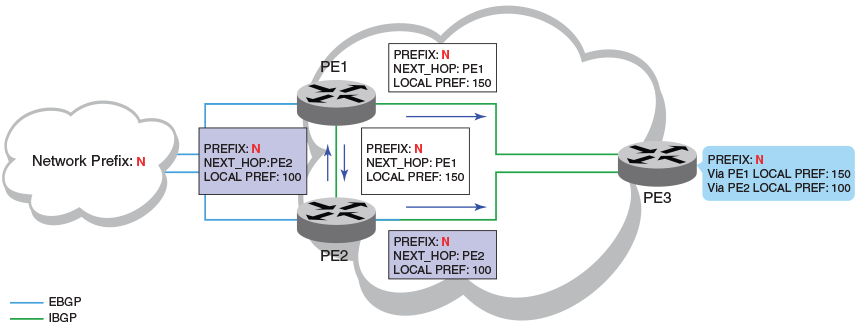BGP Best-External Route
The best external route is the most preferred route among those received from external neighbors. Advertising the best external route supports fast restoration of connectivity.
The best external route, when different from the best route, acts as a backup route and introduces additional information into an Interior Border Gateway Protocol (iBGP) mesh, which can be useful in restoration of connectivity.
In active-backup topologies, service providers might use routing policies that cause a border router to choose a path received over an iBGP session (of another border router) as the best path for a prefix even when an Exterior Border Gateway Protocol (eBGP) learned path exists on the device. This type of active-backup topology defines one exit or egress point for the prefix in the autonomous system and uses the other points as backups when the primary link or eBGP peering is not available. When advertisement of the best-external path is not configured, such a routing policy causes the border router to hide (from the autonomous system) the paths learned over its eBGP sessions because it does not advertise these paths.
When advertisement of the best external path is configured by using the best-external command, the best external learned path, when different from the best route, is advertised and acts as a backup route that supports fast restoration of connectivity.
The following figure illustrates the impact of best-external configuration in a BGP topology.

- PE1 is the primary path and PE2 is the backup path to network N
- When advertisement of the best
external path is not configured:
- PE2 does not advertise prefix N to its iBGP peers because PE2 prefers the iBGP route from PE1, which has a higher local preference, as the best route when compared to its best external (eBGP) route
- PE3 has one path for prefix N
- When advertisement of the best
external path is configured:
- PE2 propagates its best external path to its iBGP peers
- PE3 has two paths for prefix N

